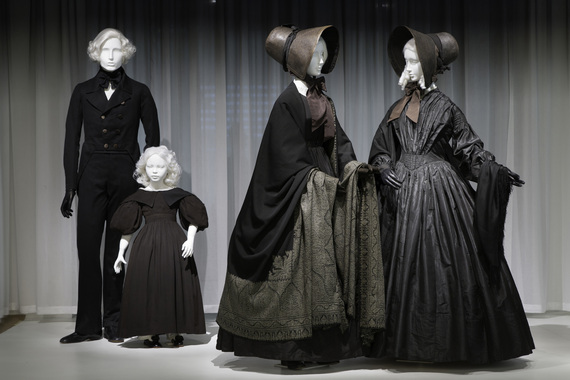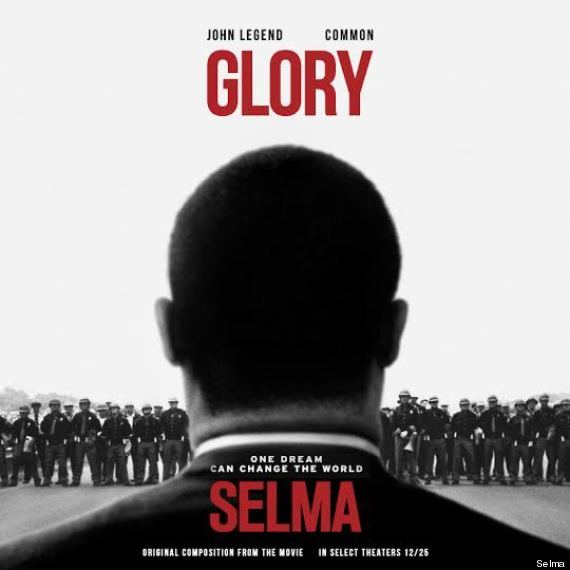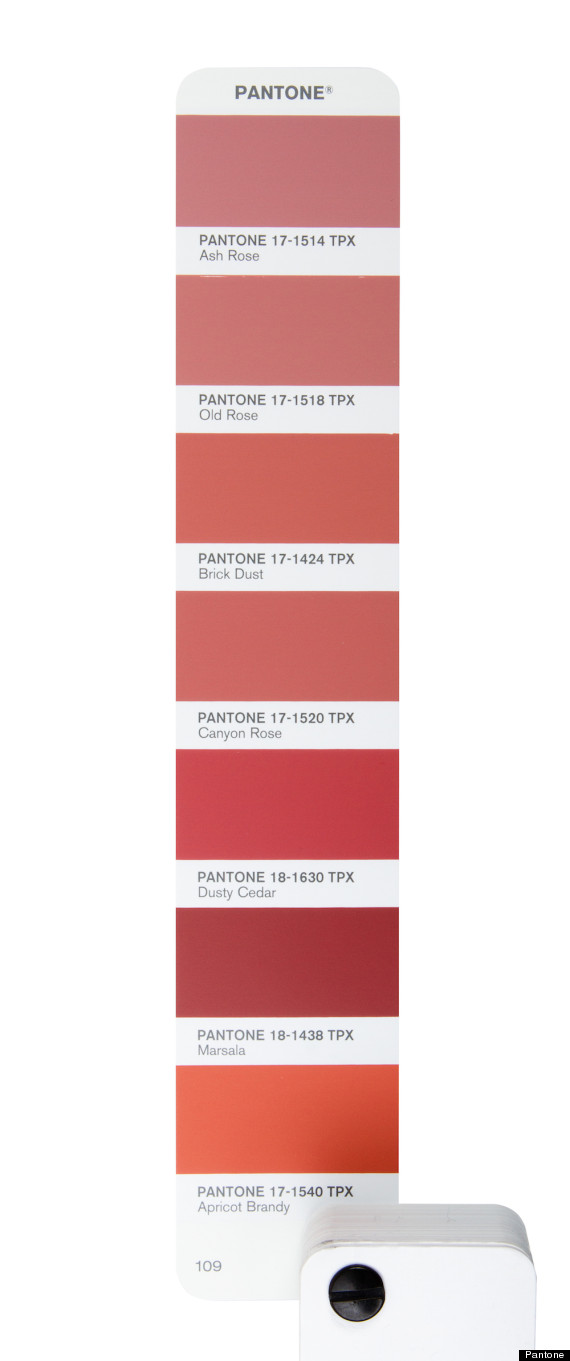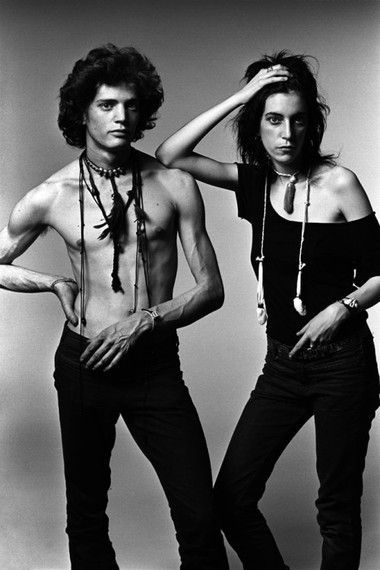Several years ago, I co-authored Illegal Living: 80 Wooster Street and the Evolution of SoHo. The book tells the story of SoHo's founding as an artist community through the prism of 80 Wooster Street, Fluxhouse II, one of 16 artists' coops started by George Maciunas, the founder of the Fluxus art movement. The building was a magnet for the avant-garde who were drawn to Jonas Mekas' Cinematheque, a ground-floor space that hosted happenings, film screenings, dance and theater performances, concerts and art shows. The artists who occupied SoHo lofts did so illegally because the neighborhood, when they arrived, was solely manufacturing. You could work in your studio but you had to sleep elsewhere, the law said, although many hid their mattresses and broke the law. Only in 1971, with the new zoning that permitted live-work artist residences in SoHo, did their life become legal.
But artist owned and/or rented live-work spaces, some of them in cooperative buildings developed by artists, had originated over 100 years earlier as a Municipal Arts Society (MAS) walking tour of the artist' studio buildings, many on West 67th Street, led by Deborah Zelcer, revealed. Particularly in artist buildings developed pre-zoning (1916), artists took to the idea of communalism.
Inspired by the Tenth Street Studio Building in Greenwich Village, built in 1857 and demolished in 1956, with its giant skylit courtyard, and 25 studios, some of which had bedrooms attached, artists uptown began to create their own templates for live/work spaces. "They were not," said tour guide Deborah Zelcer, "starving artists, but rather artists in the mainstream." It was, Zelcer reminded the group, an era before photography, when people went to art openings to see what was going on in the century.
There were several early artist studio building experiments. One was The Rembrandt Studio building, at 152 West 57th Street (Carnegie Hall Tower now stands on the site) which went up in 1881 and was very successful. It was followed by The Chelsea on West 23rd Street, built from 1883-1885, a 12-story building in the Gothic Revival style, which was designed as an artist coop with a nursery and a health club but which went into foreclosure and became a hotel.
Another turn-of-the-century artist experiment was built by a single artist: The Beaux Arts Studios at 80 West 40th Street, a 12-story structure built in 1901 by Abraham Archibold Anderson, a portrait painter. With a fortune inherited by his wife, the daughter of Jeremiah Milbank, the founder of the Borden Milk Company, Anderson hired architect Charles A. Rich to design a building with live-work spaces for artists, 24 of them with double-height windows. One artist who had space in the building was the abstract painter, Katherine Sophie Dreier.
At the turn of the century, however, with builders discouraged by the failure of several ventures and a damper on building coops, artists uptown decided to become the developers themselves. As it turned out, 67th Street was perfect for their plans. Land was cheap, they could build high and they could get much valued north light especially since the adjacent block (68th Street) was relatively undeveloped, with low structures. This allowed them to design the new buildings with north-facing double-height studios.
From 1903-1918, a series of artist studio buildings was erected in the now landmarked West 67th Street Artists' Colony Historic District. The artist studios were marketed to artists from the Barbizon and Ash Can School, many of them successful artists who had money.
According to the National Register of Historic Places designation (1985) for the 67th Street District, "All of the residential buildings were erected as cooperatives with a larger percentage of the apartments being owned by individuals and the remainder owned by the cooperative corporations and rented so as to bring a steady income to the building." It was an early model for coop ownership as an alternative to renting.
The buildings on the tour speak to another moment in New York City history. There's the lobby of Central Park Studios at 15 West 67th with its painted murals of Poetica, Pictura and Musica, where poet Robert Lowell and painter Stuart Davis once lived. Earl Davis, Davis's son, was on the tour to learn more about the 67th Street artist colony and I got to ask him a few questions about life on the block.
Davis recalled that his father Stuart, was very poor until the late 1940s. Since he lived in a small apartment on West 13th Street and 7th Avenue, his early work was small, painted on an easel that could fit into the space. Only after Stuart Davis received a Guggenheim, was he able to move uptown to 67th Street where he rented a big apartment, very cheaply, in 15 West 67th Street. Earl Davis, who was two when his family moved there, remembers the block as being full of artists: Raphael and Moses Soyer, Leon Kroll, photographer Arnold Newman, Esteban Vicente and Robert Beverly Hale, who taught at the Art Students League.
Davis recalled that his mother, Roselle Davis, along with other mothers on the block, were up in arms when Robert Moses came in with a bulldozer in the middle of the night to clear space for an enlarged Tavern on the Green parking lot in Central Park. Their protest made the newspapers and Davis, who was then a young child, remembers standing by the barricade. A subsequent court order blocked the move, and the space was turned into a children's playground. It was, Davis said, "the first battle that Robert Moses lost." On a more somber note, Davis told the story that his mother was present when a cab pulled up to the building with Robert Lowell, who was coming back from the airport, dead in the back seat.
A Tiffany lamp, a sign of admiration for the Arts and Crafts movement, hangs at the entrance of Sixty-Seventh Street Studios at 27 West 67th Street designed by the firm of Sturgis & Simonson and built in 1901-3. It was the first studio building designed with the idea of co-op apartments. There were 14 large studio spaces, each with duplex living areas consisting of dining room, study, kitchen, bathroom, bedroom and balcony overlooking the studio and 20 smaller units. According to the National Register report, landscape painter Henry W. Ranger assembled a group of artists to invest in the building when commercial builders displayed no interest. Among the original stockholders were painters Frank Dumond, Edward Naegele, Paula Dessa, V. V. Sewell and Childe Hassam. Participating artists were given permanent leases and building shares. To cover building maintenance expenses, several apartments were rented out.
The building became so popular that Henry Ranger formed a new group with many of the same stockholders to build The Atelier, at 33 West 67th Street, (1903-1905), a studio building that replicated the 27th Street Studios building's design.
Across the street was 50 West 67th, a musician's building designed by the architectural firm Shape & Bready. Erected with 30 inch thick soundproof walls, it was built in 1917.
The crown jewel on the block, the Hotel Des Artistes at 1 West 67th Street, designed by George Mort Pollard and built in 1917, featured magnificent murals in the lobby, a communal dining room (now a restaurant), a pool and a billiards room. Since there were no kitchens in the apartments, many of which had double height windows, the building had an elaborate dumbwaiter system to bring food from the dining room.
We walked downtown, along Central Park, until we reached 57th Street, which tour leader Zelcer described as an "important cultural force." There were many art dealers in the neighborhood and Carnegie Hall served as a cultural icon to the neighborhood, having been built in 1891, with artist studios above the concert hall. The studios are in the process of being converted to offices and classrooms for Carnegie Hall. The adjacent Carnegie Hall Tower building was built with air rights transferred from Carnegie Hall. Mercifully, the Russian Tea Room, funded by Russian émigré dancers survived.
On 57th Street, the tour turned political with a discussion of how historic buildings, by transferring air rights, have altered the street's skyline. We stood across the street from two adjacent artist studio buildings, one with the original façade at 130 West 57th--windows that the American Impressionist artist Childe Hassam, who was one of the developers of the buildings, often used as a background in his paintings. Ultimately, one building evolved from artist studios to offices for arts management companies. Although we never got to see it, we were told that there is a small museum in the lobby of 130 West 57th, displaying photos of the people who lived in the building. Still owned by a painter in the Van Doren family, the building will soon be fully commercial.
The last stop on the tour was Steinway Hall at 109 West 57th Street where an audience was gathered for a concert. We moved inside the landmarked hall but were politely ushered out when a gentleman asked us if we were there to hear the concert. Steinway Hall and The Steinway building are both landmarked but because of transferred air rights a new tower (even higher than 157 West 57th Street) is planned to loom over the original site. At what price preservation? asked Zelcher.
As I headed downtown to SoHo, I reflected on the brave artist developers who had left their mark uptown. It was true of SoHo artists, too. They had occupied loft spaces, renting studios but living in primitive spaces illegally while they lobbied to get the zoning changed. They brought galleries and museums to the neighborhood and coffee shops and bars.
But they could not prevent what happened next. Loft prices soared and gentrification set in. Galleries moved to Chelsea and Madison Avenue boutiques moved to SoHo. Prada. Chanel. Gucci. Burberry. Etro. Wall Street folks, along with their nannies, their $3,000 strollers and their rooftop gardeners, moved to SoHo and George Maciunas's dream of a neighborhood of Fluxhouses or artist coops faded. Many artists remain upstairs but on the street level the arts community that Maciunas envisioned has vanished from view.
![2014-12-02-1DeborahZelcerMASTour.jpg]()
![2014-12-02-2LobbyMurals.jpg]()
![2014-12-02-3TiffanyEntryLamp.jpg]()
![2014-12-02-4DoubleHeightWindows.jpg]()
![2014-12-02-5GainsboroughStudios.jpg]()
![2014-12-02-6GainsboroughDetail.jpg]()
![2014-12-02-7130West57Facade.jpg]()
But artist owned and/or rented live-work spaces, some of them in cooperative buildings developed by artists, had originated over 100 years earlier as a Municipal Arts Society (MAS) walking tour of the artist' studio buildings, many on West 67th Street, led by Deborah Zelcer, revealed. Particularly in artist buildings developed pre-zoning (1916), artists took to the idea of communalism.
Inspired by the Tenth Street Studio Building in Greenwich Village, built in 1857 and demolished in 1956, with its giant skylit courtyard, and 25 studios, some of which had bedrooms attached, artists uptown began to create their own templates for live/work spaces. "They were not," said tour guide Deborah Zelcer, "starving artists, but rather artists in the mainstream." It was, Zelcer reminded the group, an era before photography, when people went to art openings to see what was going on in the century.
There were several early artist studio building experiments. One was The Rembrandt Studio building, at 152 West 57th Street (Carnegie Hall Tower now stands on the site) which went up in 1881 and was very successful. It was followed by The Chelsea on West 23rd Street, built from 1883-1885, a 12-story building in the Gothic Revival style, which was designed as an artist coop with a nursery and a health club but which went into foreclosure and became a hotel.
Another turn-of-the-century artist experiment was built by a single artist: The Beaux Arts Studios at 80 West 40th Street, a 12-story structure built in 1901 by Abraham Archibold Anderson, a portrait painter. With a fortune inherited by his wife, the daughter of Jeremiah Milbank, the founder of the Borden Milk Company, Anderson hired architect Charles A. Rich to design a building with live-work spaces for artists, 24 of them with double-height windows. One artist who had space in the building was the abstract painter, Katherine Sophie Dreier.
At the turn of the century, however, with builders discouraged by the failure of several ventures and a damper on building coops, artists uptown decided to become the developers themselves. As it turned out, 67th Street was perfect for their plans. Land was cheap, they could build high and they could get much valued north light especially since the adjacent block (68th Street) was relatively undeveloped, with low structures. This allowed them to design the new buildings with north-facing double-height studios.
From 1903-1918, a series of artist studio buildings was erected in the now landmarked West 67th Street Artists' Colony Historic District. The artist studios were marketed to artists from the Barbizon and Ash Can School, many of them successful artists who had money.
According to the National Register of Historic Places designation (1985) for the 67th Street District, "All of the residential buildings were erected as cooperatives with a larger percentage of the apartments being owned by individuals and the remainder owned by the cooperative corporations and rented so as to bring a steady income to the building." It was an early model for coop ownership as an alternative to renting.
The buildings on the tour speak to another moment in New York City history. There's the lobby of Central Park Studios at 15 West 67th with its painted murals of Poetica, Pictura and Musica, where poet Robert Lowell and painter Stuart Davis once lived. Earl Davis, Davis's son, was on the tour to learn more about the 67th Street artist colony and I got to ask him a few questions about life on the block.
Davis recalled that his father Stuart, was very poor until the late 1940s. Since he lived in a small apartment on West 13th Street and 7th Avenue, his early work was small, painted on an easel that could fit into the space. Only after Stuart Davis received a Guggenheim, was he able to move uptown to 67th Street where he rented a big apartment, very cheaply, in 15 West 67th Street. Earl Davis, who was two when his family moved there, remembers the block as being full of artists: Raphael and Moses Soyer, Leon Kroll, photographer Arnold Newman, Esteban Vicente and Robert Beverly Hale, who taught at the Art Students League.
Davis recalled that his mother, Roselle Davis, along with other mothers on the block, were up in arms when Robert Moses came in with a bulldozer in the middle of the night to clear space for an enlarged Tavern on the Green parking lot in Central Park. Their protest made the newspapers and Davis, who was then a young child, remembers standing by the barricade. A subsequent court order blocked the move, and the space was turned into a children's playground. It was, Davis said, "the first battle that Robert Moses lost." On a more somber note, Davis told the story that his mother was present when a cab pulled up to the building with Robert Lowell, who was coming back from the airport, dead in the back seat.
A Tiffany lamp, a sign of admiration for the Arts and Crafts movement, hangs at the entrance of Sixty-Seventh Street Studios at 27 West 67th Street designed by the firm of Sturgis & Simonson and built in 1901-3. It was the first studio building designed with the idea of co-op apartments. There were 14 large studio spaces, each with duplex living areas consisting of dining room, study, kitchen, bathroom, bedroom and balcony overlooking the studio and 20 smaller units. According to the National Register report, landscape painter Henry W. Ranger assembled a group of artists to invest in the building when commercial builders displayed no interest. Among the original stockholders were painters Frank Dumond, Edward Naegele, Paula Dessa, V. V. Sewell and Childe Hassam. Participating artists were given permanent leases and building shares. To cover building maintenance expenses, several apartments were rented out.
The building became so popular that Henry Ranger formed a new group with many of the same stockholders to build The Atelier, at 33 West 67th Street, (1903-1905), a studio building that replicated the 27th Street Studios building's design.
Across the street was 50 West 67th, a musician's building designed by the architectural firm Shape & Bready. Erected with 30 inch thick soundproof walls, it was built in 1917.
The crown jewel on the block, the Hotel Des Artistes at 1 West 67th Street, designed by George Mort Pollard and built in 1917, featured magnificent murals in the lobby, a communal dining room (now a restaurant), a pool and a billiards room. Since there were no kitchens in the apartments, many of which had double height windows, the building had an elaborate dumbwaiter system to bring food from the dining room.
We walked downtown, along Central Park, until we reached 57th Street, which tour leader Zelcer described as an "important cultural force." There were many art dealers in the neighborhood and Carnegie Hall served as a cultural icon to the neighborhood, having been built in 1891, with artist studios above the concert hall. The studios are in the process of being converted to offices and classrooms for Carnegie Hall. The adjacent Carnegie Hall Tower building was built with air rights transferred from Carnegie Hall. Mercifully, the Russian Tea Room, funded by Russian émigré dancers survived.
On 57th Street, the tour turned political with a discussion of how historic buildings, by transferring air rights, have altered the street's skyline. We stood across the street from two adjacent artist studio buildings, one with the original façade at 130 West 57th--windows that the American Impressionist artist Childe Hassam, who was one of the developers of the buildings, often used as a background in his paintings. Ultimately, one building evolved from artist studios to offices for arts management companies. Although we never got to see it, we were told that there is a small museum in the lobby of 130 West 57th, displaying photos of the people who lived in the building. Still owned by a painter in the Van Doren family, the building will soon be fully commercial.
The last stop on the tour was Steinway Hall at 109 West 57th Street where an audience was gathered for a concert. We moved inside the landmarked hall but were politely ushered out when a gentleman asked us if we were there to hear the concert. Steinway Hall and The Steinway building are both landmarked but because of transferred air rights a new tower (even higher than 157 West 57th Street) is planned to loom over the original site. At what price preservation? asked Zelcher.
As I headed downtown to SoHo, I reflected on the brave artist developers who had left their mark uptown. It was true of SoHo artists, too. They had occupied loft spaces, renting studios but living in primitive spaces illegally while they lobbied to get the zoning changed. They brought galleries and museums to the neighborhood and coffee shops and bars.
But they could not prevent what happened next. Loft prices soared and gentrification set in. Galleries moved to Chelsea and Madison Avenue boutiques moved to SoHo. Prada. Chanel. Gucci. Burberry. Etro. Wall Street folks, along with their nannies, their $3,000 strollers and their rooftop gardeners, moved to SoHo and George Maciunas's dream of a neighborhood of Fluxhouses or artist coops faded. Many artists remain upstairs but on the street level the arts community that Maciunas envisioned has vanished from view.










































